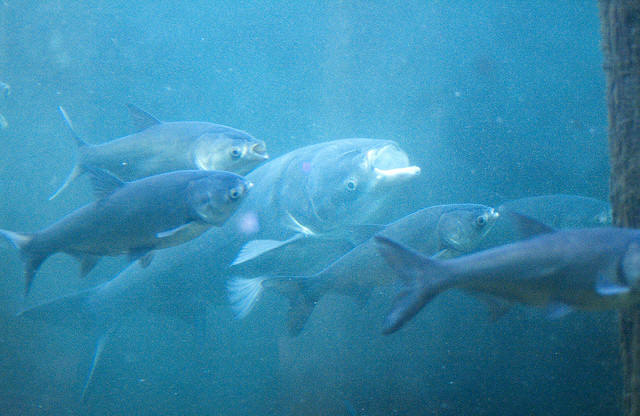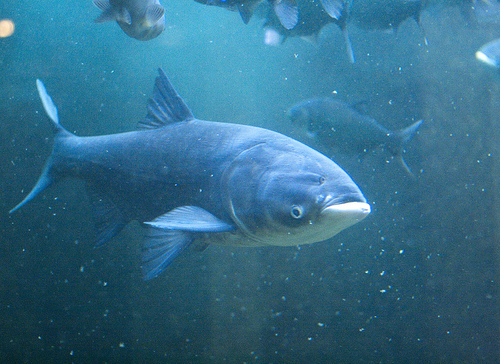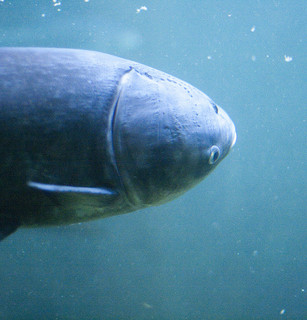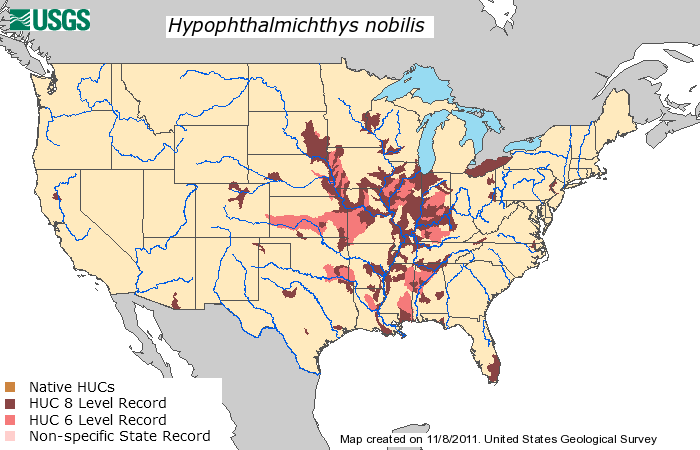Habitat
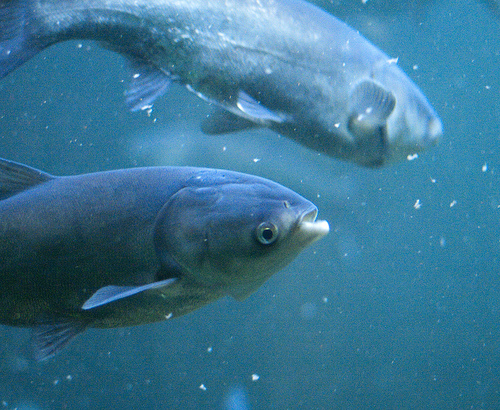 Bighead carp can be found in many locations all across the
globe. They are commonly found in fresh water areas,
especially lakes and rivers. This species is known to be
very hardy and can survive in numerous different freshwater
environments, promoting the ability to live in many parts of the
globe. Preferred environmental conditions for Bighead carp
are waters with temperatures ranging from 4 to 26 degrees
Celsius. Many Bighead carp are found around rivers and
tributaries with low to medium water velocities, but constantly
running water is the key. The velocity of the water
becomes extremely important when involving reproduction, but we
will discuss that a bit later. The preferred depths of
water can fluctuate depending on the location, but when foraging
in shallow water depths will be about .5 to 1.5 meters deep.
The Bighead carp are commonly found in range from surface to
middle depths of the water. To get a better idea of what
their habitat looks like see the picture below.
Bighead carp can be found in many locations all across the
globe. They are commonly found in fresh water areas,
especially lakes and rivers. This species is known to be
very hardy and can survive in numerous different freshwater
environments, promoting the ability to live in many parts of the
globe. Preferred environmental conditions for Bighead carp
are waters with temperatures ranging from 4 to 26 degrees
Celsius. Many Bighead carp are found around rivers and
tributaries with low to medium water velocities, but constantly
running water is the key. The velocity of the water
becomes extremely important when involving reproduction, but we
will discuss that a bit later. The preferred depths of
water can fluctuate depending on the location, but when foraging
in shallow water depths will be about .5 to 1.5 meters deep.
The Bighead carp are commonly found in range from surface to
middle depths of the water. To get a better idea of what
their habitat looks like see the picture below.
Now that you have a better idea of the environment Bighead carp live
in we can discuss the geographical distribution of the species next.
The original area that Bighead carp called home is in Asia; particularly
China. The Bighead carp can be found in many countries in other
parts of Asia, different countries across Europe, and even areas in the
Middle East. How did these fish wind up in so many locations
around the globe though? In most cases these fish were introduced
by people to other parts of the world. Thanks to means of
transportation, the Bighead carp were able to spread to other tolerable
habitats in these countries. Many people introduced the species as
a means for food production because carp are a fast growing and fairly
large source for food. In other areas of the world, carp were used
to control algal populations in reservoirs and maintain levels of water
quality in ponds and fish hatcheries.
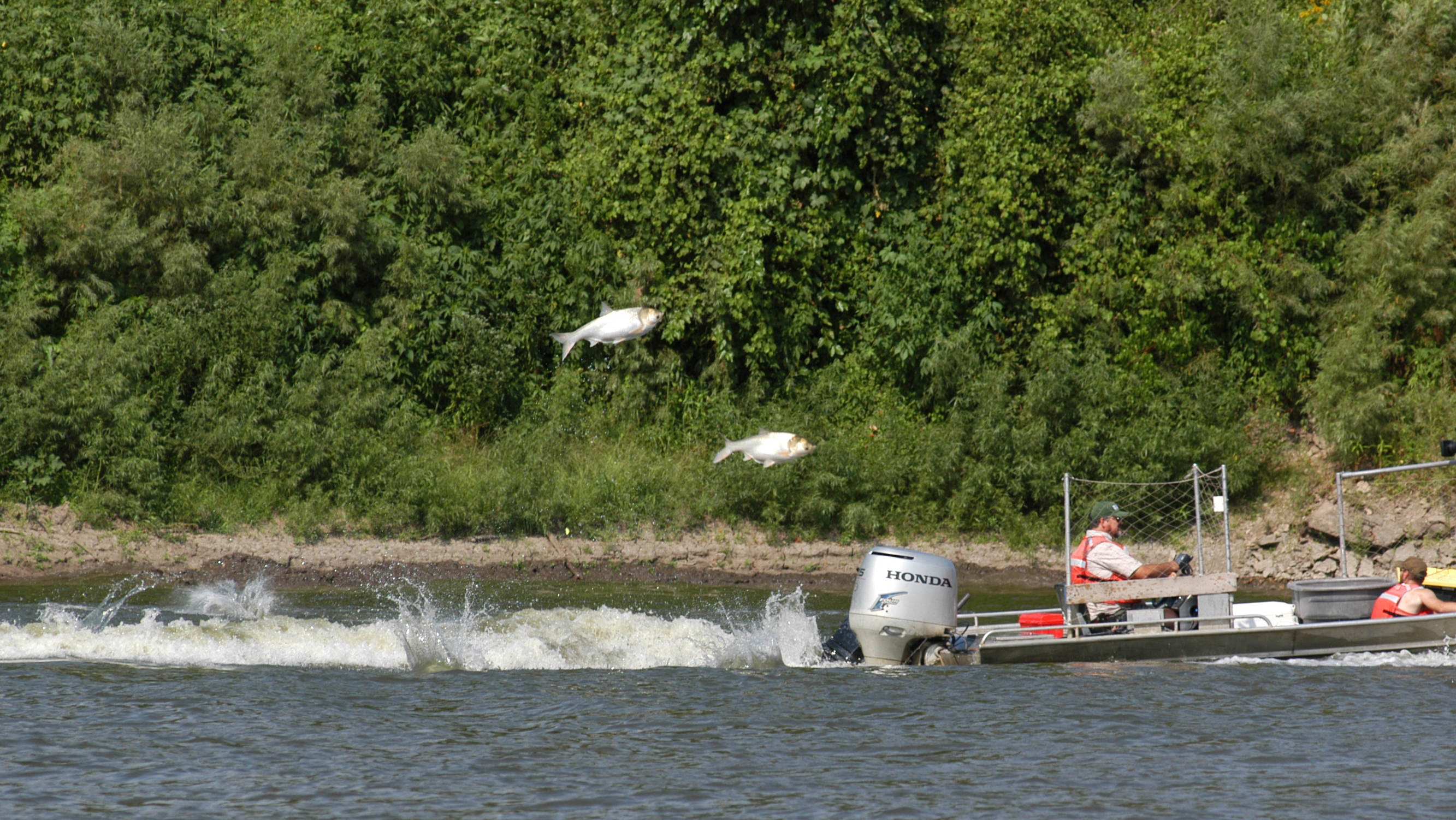 Bighead carp are hardy fish,
able to adapt to a variety of habitats and temperatures. It is also
very probable that as modern boats would travel from country to country,
they would reach locks (locks raise levels of water for ships going
between lakes, rivers, and channels) and release their ballasts
(compartments of the boat that can take in water to control the buoyancy
and stability) where potential invasive species such as the Bighead carp
could be held. This enables the species to start a new
population in the habitat without predation or other stresses to limit
reproduction and growth. This kind of situation has been found to
happen in many places, but one country in particular is the United
States. The Bighead carp, along with other carp species have been
Bighead carp are hardy fish,
able to adapt to a variety of habitats and temperatures. It is also
very probable that as modern boats would travel from country to country,
they would reach locks (locks raise levels of water for ships going
between lakes, rivers, and channels) and release their ballasts
(compartments of the boat that can take in water to control the buoyancy
and stability) where potential invasive species such as the Bighead carp
could be held. This enables the species to start a new
population in the habitat without predation or other stresses to limit
reproduction and growth. This kind of situation has been found to
happen in many places, but one country in particular is the United
States. The Bighead carp, along with other carp species have been
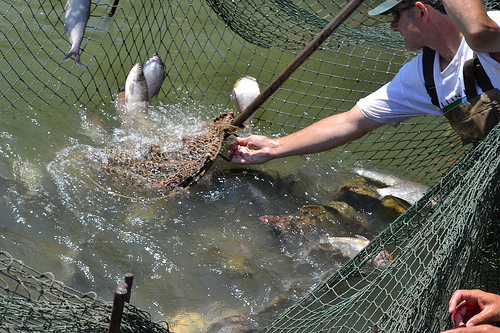 spreading throughout the country. They have inhabited many of the
rivers, in extreme cases taking over the entire habitat. In less
extreme cases they compete with native fish and other organisms living
in the aquatic environments. It is believed that Bighead were
first introduced into the United States in fish ponds and reservoirs to
be used as a cheap means to promote higher water quality. In
southern states like Arkansas, Alabama, and Missouri it was not uncommon
for these fish to be found their whether for private business uses or
research. Unfortunately, when these areas experienced flooding
many of the Bighead carp escaped into the rivers nearby. Most of
the lakes and rivers in the United States were comparable habitats to
that of China so the Bighead carp could sustain themselves and thrive in
the new location. Now this fish can be found all across waterways
in the United States from rivers like the Missouri River, Illinois
River, and many parts of the Mississippi River, to different lakes in
many states, including a new pressure of invasion of the Great Lakes and
Wisconsin waterways.
spreading throughout the country. They have inhabited many of the
rivers, in extreme cases taking over the entire habitat. In less
extreme cases they compete with native fish and other organisms living
in the aquatic environments. It is believed that Bighead were
first introduced into the United States in fish ponds and reservoirs to
be used as a cheap means to promote higher water quality. In
southern states like Arkansas, Alabama, and Missouri it was not uncommon
for these fish to be found their whether for private business uses or
research. Unfortunately, when these areas experienced flooding
many of the Bighead carp escaped into the rivers nearby. Most of
the lakes and rivers in the United States were comparable habitats to
that of China so the Bighead carp could sustain themselves and thrive in
the new location. Now this fish can be found all across waterways
in the United States from rivers like the Missouri River, Illinois
River, and many parts of the Mississippi River, to different lakes in
many states, including a new pressure of invasion of the Great Lakes and
Wisconsin waterways.
To see an updated point map click the following link: http://nas2.er.usgs.gov/viewer/omap.aspx?SpeciesID=551
Curious to see what makes them so successful in their habitats? Click here to see the adaptations that help Bighead carp do so well.
